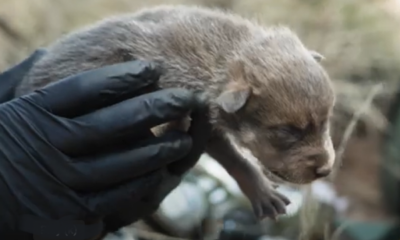Adventure
Is Nest Predation Causing Wild Turkey Numbers to Drop?
The thunder has been a bit quieter of late …
For the last couple of years, America’s wild turkey, once the star success story of conservationism, has been on the decline. The simple question is “Why?” Unfortunately, there’s no simple answer. There are six subspecies of turkeys, each with its own habitat and set of challenges. The American thunder chicken isn’t in the kind of trouble it was 100 years ago, but wildlife biologists and hunters alike are well-served to stop the decline. Part of the problem, biologists note, is that ground-nesting birds like turkeys and quail are always at risk from egg-eating critters.
Of course, it’s not just about nest predation. Extreme weather, avian flus, and quality habitat loss are also to blame. That said, it’s a known fact that predators can negatively impact nesting survival across the landscape. How much so we are yet to totally measure, but the preliminary data of a recent 3-year study by QUWF is showing a dramatic improvement swing regarding nest predation.
Here’s where part of the problem comes in: Even some biologists may themselves treat predation with blinders on at times, thinking it’s a natural condition that occurs. Unfortunately, when the balance is totally out of whack, science shows a different approach may be needed. Furthermore, predation control is not the total ultimate answer, it is just one of the tools in a land manager’s toolbox that can and should be used when needed and should no longer be ignored.
“We began setting up our QUWF study farms to trap nest predators where turkey nesting had been literally wiped-out last year,” explains Nick Prough, Chief Wildlife Biologist and project manager of the nest predation research project. Prough continued, “With one set of private landowners we set up a one (1) mile by (1) one mile study area consisting of 640 acres with several adjoining landowners we had walked with to see the total predation of many turkey nests in the past and subsequent low poult counts with decreasing turkey numbers over the past years.
“These landowners have consistently completed intense habitat work over the past decade but something else seemed to be missing in the puzzle. We set up a trapping regiment where-in every 10- acre tract was to be trapped over the extended new trapping period that the Missouri Department of Conservation (MDC) had passed into the regulations to address these types of situations occurring across the landscapes. The traps were checked every day during the extended trapping seasons and during the regular trapping seasons. During that time period on this particular study site, we trapped 130 nest predators (67% racoons, 32% possums, 1% other) from the landscape.” Several other satellite study farms in other counties in this study are also reporting high nest predator trapping results and increased positive nesting survival so far this year for turkey broods.
“This spring we filmed the earliest wild turkey brood discovery I have ever witnessed with 8 poults in the group accompanying the hen that were only 2 days old. They were utilizing some of the recently created brood habitat created just for this purpose coinciding with the additional increased trapping efforts. We also observed 7 other nesting hens which we did not disturb, that appear to be on track to producing quality broods as well on this farm. We do have video of the very young poults that were observed in the brood habitat which is great to share with other landowners working on the same increased efforts.
The landowner was ecstatic. “QUWF has helped me preserve my turkey population as well as future turkey hunting opportunities for my children and grandchildren and we will continue to increase our habitat and improve nesting survival on our farms for many years to come,” he said.
The QUWF Nest Predator Study will continue for another two (2) years to gather further accurate results and data over all of the participating farms.
It’s quite tempting to look at this data and conclude that we need to increase trapping and hunting on opossums and raccoons–the primary nest-raiders–but it’s important to remember that possums and ‘coons hold important places in the ecosystem. (Opossums in particular are insectivores in addition to scavengers … and the insects of choice are ticks. A couple possums on your land might just save you a nasty case of Lyme.) As always, we’ll need to keep our eyes on the data and what lies beyond it before we put a finger on the trigger.
-

 Adventure1 month ago
Adventure1 month agoDoes the “Big Beautiful Bill” Have a Public-Lands Wart?
-

 Adventure2 months ago
Adventure2 months agoHowling in Cuckoo: How Mexican Wolves are Fostered
-

 Adventure2 weeks ago
Adventure2 weeks agoREACTION: Trump’s Make America Beautiful Again Agenda
-

 Gear3 weeks ago
Gear3 weeks agoLet Freedom RING! Primary Arms’ Independence Day Category Sale Starts NOW
-

 Adventure4 weeks ago
Adventure4 weeks agoU.S. Bighorn Sheep Going Home to Canada
-

 Fishing2 days ago
Fishing2 days agoMy Wacky Bush Brings All the Bass to the Yard
-

 Adventure1 month ago
Adventure1 month agoYour Dream Hunt Could Be a Movie & Leupold Can Help







